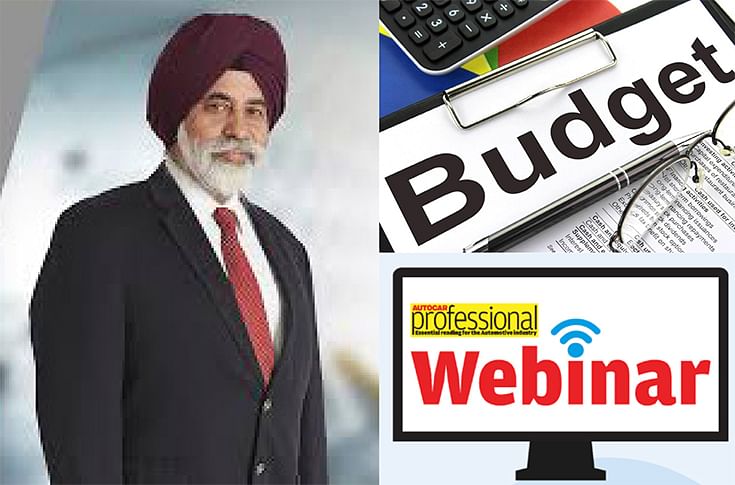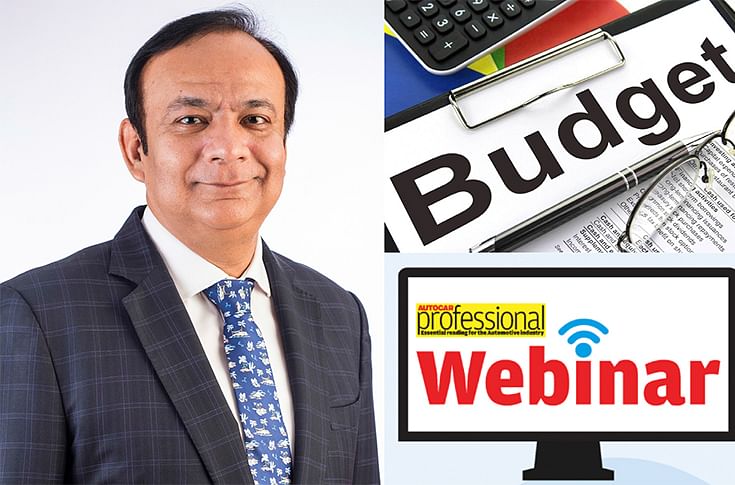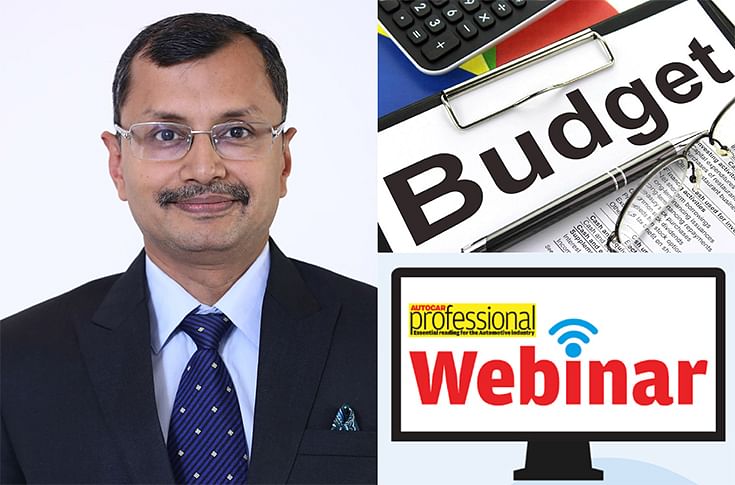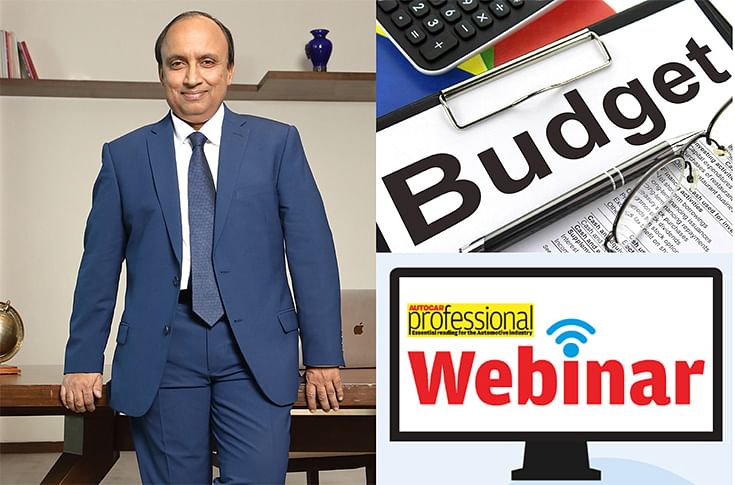India’s road to growth paved through infra and scrappage policy
The speakers were unanimous in their call that the Scrappage Policy and appropriate mobilisation of the infrastructure spends will lead India’s revival in the right earnest.
The Union Budget 2021 is all about putting the economy in reset mode. Just before announcing her proposal for direct tax, the Finance Minister N Sitharaman quoted the Tamil poet Thiruvalluvar and said, “A king/ruler is the one who creates and acquires wealth, protects and distributes it for common good.” But how good did the industry consider the Budget to be?
Autocar Professional touched base with some of the captains of India Auto Inc to understand the longer-term implications? The panel of speakers for the Budget 2021 analysis included
- Sandeep Singh, MD, Tata-Hitachi
- Anuj Kathuria, COO – M&HCV, Ashok Leyland
- Tarun Garg, director, Sales and Marketing, Hyundai Motor India
- Deepak Jain, president, ACMA
- Shashank Srivastava, ED – Marketing and Sales, Maruti Suzuki India
Autocar Professional’s Sumantra Barooah moderated the discussion.
Sandeep Singh: ‘Expanding product range and bringing in advanced technology to service demand’

The huge infrastructure outlay is undeniably one of the key aspects that stand out when you get down to a detailed analysis. Sandeep Singh, MD, Tata-Hitachi says this, “Infra allocation is a welcome move to help revival of auto industry.”
According to him, road construction has been one of the biggest demand drivers for companies like theirs, “The infra outlay will have trickle down impact for multiple years and this will lead to sustainable demand for the longer term. Road construction at 3800 km thus far due to Covid-led slowdown but now catching u with 35 km/day. Hope to complete construction of 8000-10,000 km by end of this fiscal. That is achievable.”
He believes that even, “Water pipeline construction and urban development can also help revive demand for the industry over next 3-5 years.”
The company is preparing itself comprehensively to take on the potential growth expected. Singh elaborated how they are, “expanding product range and bringing in advanced technology to service demand and requirement. We are also exporting advanced mining equipment to other parts of the world and looking to increase capex to back new projects.”
Anuj Kathuria: ‘Expect FY2022 to be a good year for the CV sector’

In fact, the Budget announcements brought maximum cheer to the M&HCV segment. Anuj Kathuria, COO – M&HCV, Ashok Leyland said that the, “Additional infra project outlay helping CV players. Tipper demand is very good and started picking up right from Q2 and is leading the pack. Road infra and other projects will help demand. These will continue to provide positive impact for the tipper segment.”
The announcement of the long awaited Scrappage Policy is the other key highlight of the Budget. Though the finer details are yet to be announced, Kathuria explained that the, “Scrappage Policy will be voluntary in nature rather than mandatory. Vehicles more than 15 years need a fitness certificate. Overall, this will help the industry, in-line with discussions held thus far. This will put the circular economy in motion and create demand.”
But announcement of the Policies and reforms is one aspect and their actual execution is another point. Kathuria explained the correlation and seemed to be cautiously optimistic about the demand cycle heading north in future, “In FY2018 and FY2019, we had seen impetus on infra led by road construction. Tippers saw highest ever demand with record volumes in the CV segment. Mobilisation of the projects in FY2020 was hindered due to IL&FS crisis and lack of timely payment by contractors. If mobilisation of the projects happen seamlessly, it will help demand. Indications are positive but will have to wait and watch.”
Though it is too early to say if the downward spiral in the CV segment has hit the bottom, Kathuria acknowledged the green shoots thus far but also cautioned about the supply chain constraints thus far, “January sales are very good, growth on a MoM basis. But if you compare to last January, it is at similar levels. Certain challenges in the supply chain are there still. Input material and cost pressures still there. But Q4 FY2021 likely to be better on a year-on-year basis. I expect FY2022 to be a good year for the CV sector.”
Tarun Garg: ‘Rural demand has been driving automobile industry in a post-Covid India’

Bringing in a perspective from the passenger vehicle segment, that’s been seeing particularly encouraging recovery, Tarun Garg, director, Sales and Marketing, Hyundai Motor India calls it an, “Inclusive Budget with potential positive impact on auto industry. Overall improvement in the economy will help demand for PVs. The Scrappage Policy will help improve overall jobs and pollution levels apart from helping improve demand for new vehicles.”
According to Garg, “rural demand has been driving automobile industry in a post-Covid India. The Budget outlay puts more money in the hands of the farmers and greater focus on infra development will help maintain sales in the rural areas. Taking initiatives to enhances sales as well as service in rural areas. January sales up 24 percent. Increased thrust by the government should help the overall economy and per capita GDP.”
However, though there were broad indicators about the Government’s intent on clean and green mobility alternative, there wasn’t any specific announcement with respect to the EV segment. But Garg is not worried. He highlighted that the, “broad plans is already in place. We are confident about our plans for EVs going forward. There are a lot of positive offshoots that indicates the general direction of the government, in terms of cleaner mobility.”
Shashank Srivastava: ‘It (Scrappage Policy) has got a great potential per se but will have to await the details’

Shashank Srivastava, ED – marketing and sales, Maruti Suzuki India, the biggest car manufacturer by market share in India, too welcomed the announcement of the Scrappage Policy but highlighted the need to wait for, “finer details and contours of the policy for proper analysis. It has got a great potential per se but will have to await the details.”
Shashank explained the announcements with respect to MSP is a positive in terms of revving up demand for cars as, “Rural bounceback after the pandemic has been much better. Increase in Monsoon, higher Kharif sowing, record Rabi crop last year and good Rabi sowing this year all augur well in terms of maintaining demand in rural areas. MSP decidedly puts more money in the hands of consumers in the rural areas. Urban demand also picking up slowly. “
He added that the, “Government spending in railways also a welcome move. Current freight transport via Railways around 16-17 percent at the moment but it is constantly moving up. We are looking forward to take advantage of the Rail infra spending and also optimise one the correlation between economic growth and demand revival.”
Deepak Jain: ‘Customs duty also indicates the intent to expand use of domestic manufacturing’

Bringing in the component point of view, Deepak Jain, president, ACMA says that the, “Message is quite clear – Start-ups, innovation and R&D outlays need to be seen together. It signals towards more Atmanirbhar Bharat. Customs duty also indicates the intent to expand use of domestic manufacturing. Right innovations and R&D will help companies to be more competitive.”
He feels the renewed, “focus on infrastructure will have a trickle down positive impact for multiple years altogether. Auto ancillary and components sector a shining example of how sector can have larger impact in the global value chain. With right impetus from PLI, Indian companies will be able to generate scale and global competitiveness.”
That’s why he lauds the FM’s initiative in the Budget towards Skilling and enhancing R&D efforts, “Emphasis on R&D another good move in this direction.”
However the headwinds have not eased complete. Jains signed off saying though, “India’s share of semi-conductor consumption on a global basis is miniscule but headwinds are still there. Container shortages led to massive rise in freight rates. Supply chain concerns will take a few months to ease out.”
The speakers were unanimous in their call that a detailed Scrappage Policy and appropriate mobilisation of the infrastructure spends as allocated in the Budget will lead India’s revival in the right earnest.
RELATED ARTICLES
Cosmo First diversifies into paint protection film and ceramic coatings
The Aurangabad, Maharashtra-based packaging materials supplier is leveraging its competencies in plastic films and speci...
JSW MG Motor India confident of selling 1,000 M9 electric MPVs in first year
The 5.2-metre-long, seven-seater luxury electric MPV, which will be locally assembled at the Halol plant in Gujarat, wil...
Modern Automotives targets 25% CAGR in forged components by FY2031, diversifies into e-3Ws
The Tier-1 component supplier of forged components such as connecting rods, crankshafts, tie-rods, and fork bridges to l...






 01 Feb 2021
01 Feb 2021
 5265 Views
5265 Views





 Autocar Professional Bureau
Autocar Professional Bureau




